Private First Class Clifford Edmund Loudner, Sr.

- Unit: 8th Ranger Company, 8213th Army Unit, later Company I, 27th Infantry Regiment, 25th Infantry Division
- Date of Birth: July 27, 1927
- Entered the Military: December 29, 1949
- Date of Death: April 8, 2008
- Hometown: Crow Creek Indian Reservation, Ft. Thompson, South Dakota
- Place of Death: Rapid City, South Dakota
- Award(s): Korean Service Medal with one camp star, Combat Infantry Badge, Army of Occupation Medal
- Cemetery: Section C, Site 171. Black Hills National Cemetery, Sturgis, South Dakota
Early Life
Clifford Edmond Loudner, Sr. was born on July 17, 1926, on the Crow Creek Indian Reservation in Fort Thompson, South Dakota. Clifford’s father, Edmund Loudner, was a police officer for the U.S. Indian Service and later a hospital orderly on the reservation. His mother, Dorothy Frazier Loudner, tended to the house and her newborn son.
After Clifford’s siblings, Kenneth and Edmund were born, Dorothy went to work as a housekeeper at the brand new Fort Thompson Community School in 1939, in the same building where her sons were students. Later, Dorothy augmented the family’s income by making bead purses for a tourist concession stand.
After graduating from high school, Loudner worked for several years as a laborer on the reservation. In 1949, he enlisted in the military. His 17-year-old brother, Kenneth, followed suit in 1950.

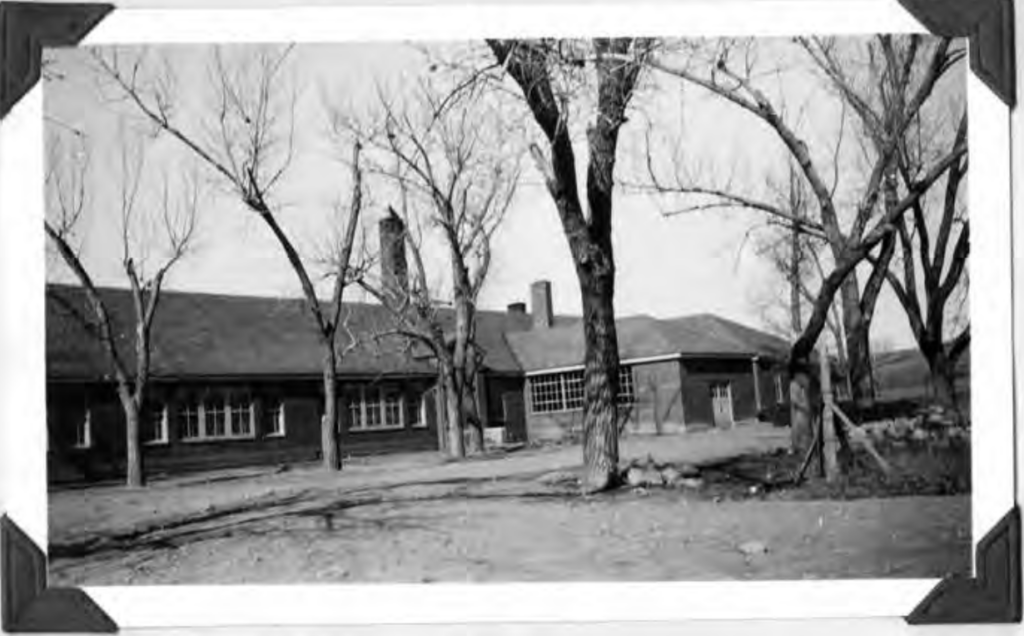
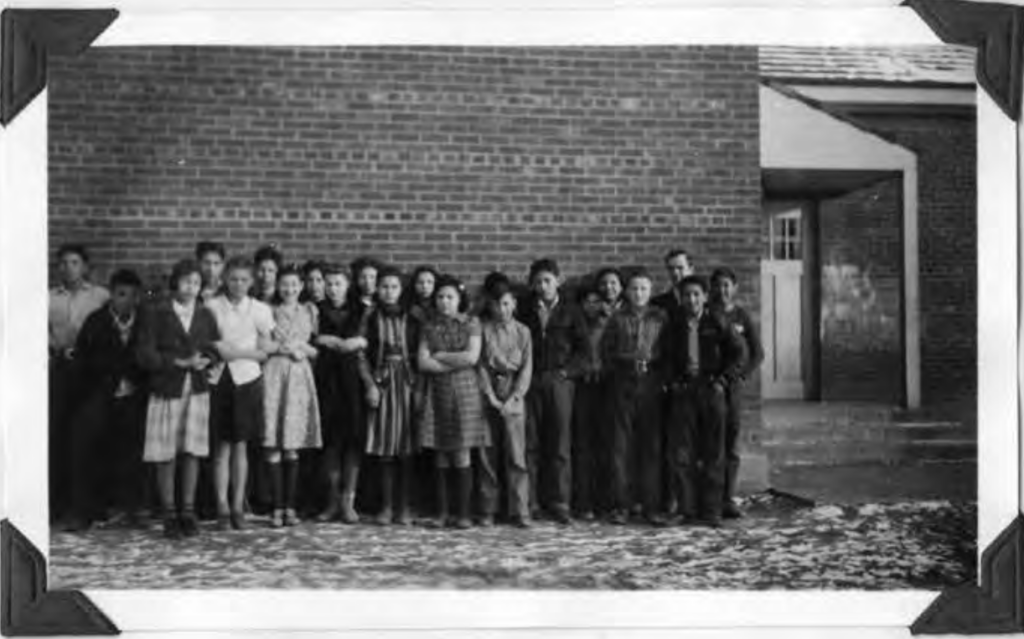
Homefront
Fort Thompson’s wartime contributions began with its inception. Named for Clark W. Thompson, a man of questionable character who was the superintendent of Indian Affairs at the time, the military fort was opened in 1864 on the Crow Creek Indian Reservation, 25 miles north of Chamberlain, South Dakota. The military fort closed in 1867.
During World War II, as the U.S. economy expanded to support the war effort, nearly 50,000 Native Americans left their reservations to build military installations and to work in defense industries, many of which were located on the West Coast. In fact, one South Dakota reservation lost approximately 25 percent of its population during the war because of this trend. This was the first time most had lived off the reservation and, due to unprecedented economic growth and opportunity, the average income of Native American households tripled during the war.
During World War II, the Navajo Code Talkers received widespread acclaim for transmitting secret Allied messages in their language to avert interception and decoding by the enemy, which aided Allied victory in the Pacific theater. However, they were not the only ones, as over 200 tribal members from South Dakota, including the Sioux, also participated in sending covert messages during that war and subsequent wars.
Native Americans as a whole have contributed a greater percentage of their people in military service to our country than any other ethnic group. During the Korean War, approximately 10,000 Native Americans served in the armed forces, many of whom were World War II Veterans. As a group, they hold active military members and veterans in high esteem, which has promoted participation. This supportive environment likely contributed to Clifford Loudner’s enlistment decision as well.
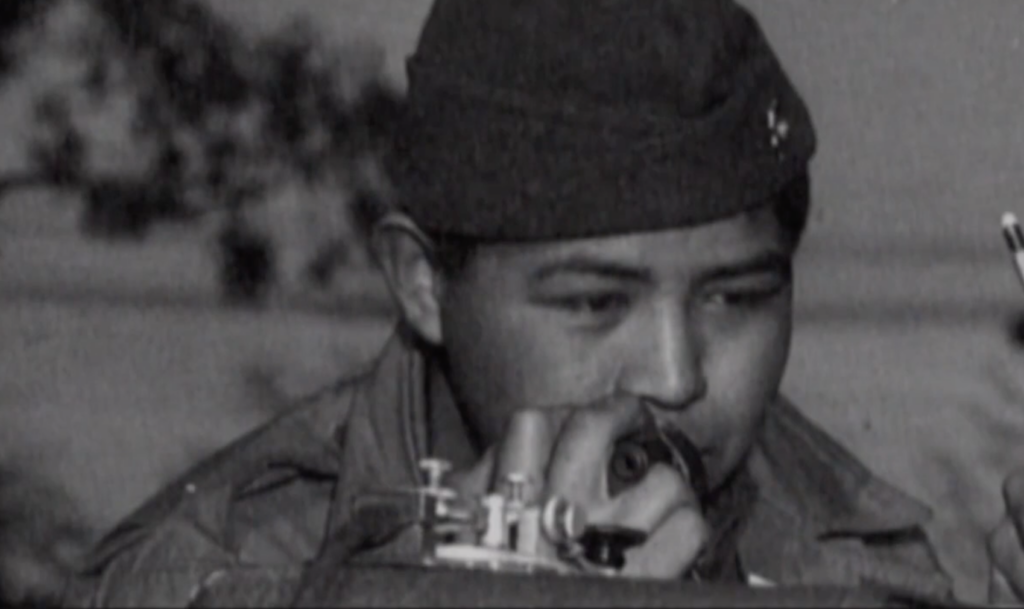
Military Experience
Clifford Loudner first enlisted in the U.S. Army Reserve on December 29, 1949, and reported for training at Sheppard Air Force Base in Texas as part of the 3758th Student Squadron. Although few specifics are known, he remained there until December 6, 1950, when returned home to South Dakota.
A few months after the outbreak of the Korean War, on September 28, 1950, Loudner was recalled to active duty. This timeframe closely coincided with an Army order that created Ranger companies, which included the one to which Loudner was soon assigned. Loudner deployed to Korea with the 8213th Army Unit, 8th Ranger Company. Ranger Companies were envisioned as “Marauder” units designed to operate behind enemy lines to attack tank parks and assembly areas.
Morning reports from January to March 1951 show him operating with the Rangers as an ordnance specialist, a crucial job that required expertise in handling nad maintaining all types of weapons, ammunition, and explosives that a Range unit might delploy. He served in Ranger missions at Ohanian and Nonsan in January 51, and Poo Awon-ni in February 1951. That same month, Loudner received a promotion to private first class. It appears he remained in Korea throughout the spring and early summer of 1951.
By April 1951, Loudner’s unit was integrated into Company I, of the 27th Infantry Regiment, 25th Infantry Division. In total, Loudner spent 7 months and 1 day overseas during the Korean War.
On July 26, 1951, Loudner received an honorable discharge and exited the military. While few specific details are known about his service, it is clear that Private First Class Loudner served admirably, as he was awarded several medals, including a Korean Service Medal with one camp star, a Combat Infantry Badge, and an Army of Occupation Medal.
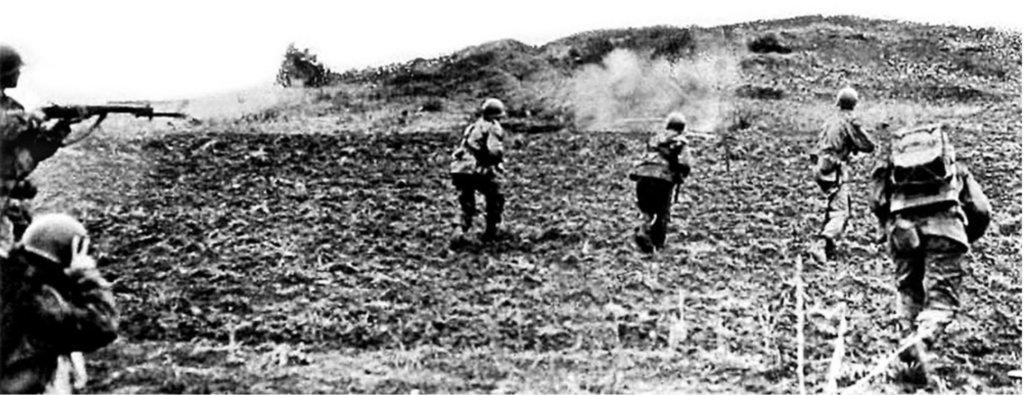


Veteran Experience
After leaving the military, Clifford Loudner returned to South Dakota and married Charlotte Big Eagle, who grew up on the same reservation. Like many young couples, the Loudners soon expanded their family with four children. However, the exaltation of bringing a child into the world was twice marred by tragedy. Their first son, Clifford, Jr., was stillborn. Then, following the healthy births of son Gary in 1954 and son Charles in 1957, something went horribly wrong during son Louis’s birth on February 2, 1961. While the baby was healthy, 32-year-old Charlotte Loudner died during delivery. Clifford Loudner suddenly became a widowed father of four. Charlotte Loudner and the couple’s first son, Clifford, are buried together at Black Hills National Cemetery in Sturgis, South Dakota.
Clifford Loudner likely turned to alcohol as a way of coping with his immense grief, as his name appeared in the newspaper for public intoxication a few times in the decades that followed. However, little else is known about his life from that point forward.
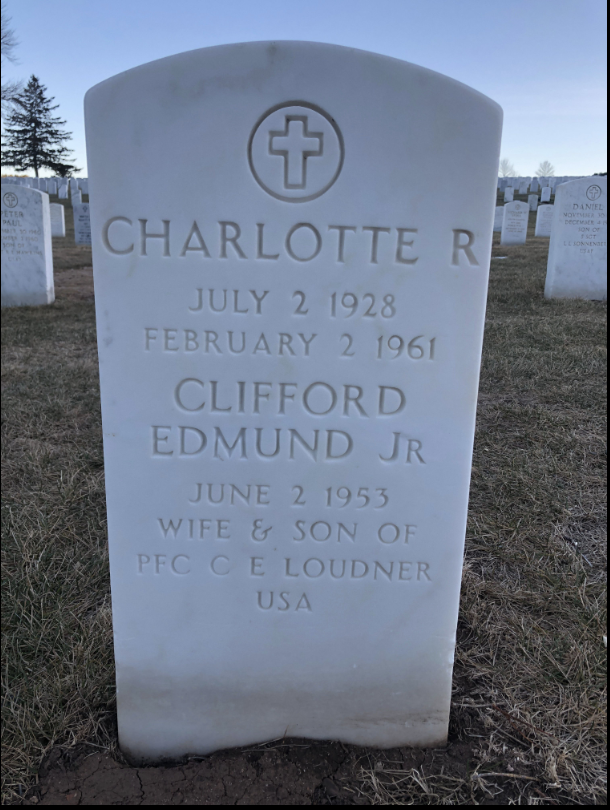
Commemoration
Private First Class Clifford Edmund Loudner, Sr., died on April 8, 2008, in Rapid City, South Dakota. He was buried at Black Hills National Cemetery in Sturgis, South Dakota. While his life was marred by great personal tragedy and struggle, he should be remembered as a dutiful soldier who answered his country’s call to serve and did so admirably.
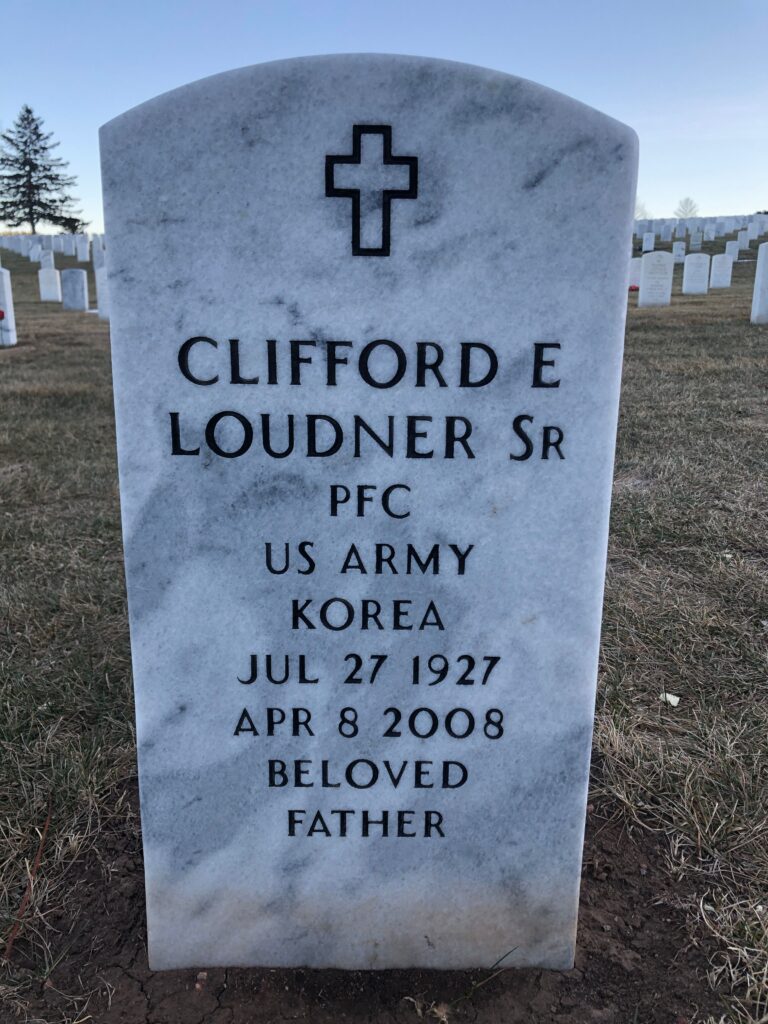
Bibliography
Primary Sources
Charlotte R. Loudner. U.S., National Cemetery Interment Control Forms, 1928-1962. http://ancestryclasroom.com.
Clifford Edmund Loudner. U.S., Social Security Death Index, 1935-2014. http://ancestryclasroom.com.
“Clifford E. Loudner.” Rapid City Journal [Rapid City, SD], April 9, 2008. https://legacy.com/us/obituaries/rapidcity/name/clifford-loudner-obituary?id=49802006.
Clifford Loudner. Official Military Personnel File. National Archives and Records Administration – St. Louis.
Clifford Loudner. Record of Gravesite Reservation. National Cemetery Administration, U.S. Department of Veterans Affairs.
Clifford Loudner. U.S., Indian Census Rolls, 1885-1940. http://ancestryclasroom.com.
Clifford Loudner. Veteran Identification Data. National Cemetery Administration, U.S. Department of Veterans Affairs.
Dorothy Frazier. South Dakota, U.S., Marriages, 1905-2018. http://ancestryclasroom.com.
Johnson, Adolph G. A Narrative History of Crow Creek Reservation and Fort Thompson Community with Special Emphasis Upon the History of the Fort Thompson Vocational Boarding School, 1863-1941. (H98-055). South Dakota State Historical Society, Department of Education, April 1, 1941. https://sddigitalarchives.contentdm.oclc.org/digital/collection/manuscript/id/5062/.
“Mrs. E. Loudner.” The Daily Republic, August 4, 1973. Newspapers.com (8350129).
South Dakota. Buffalo County. 1930 U.S. Census. Digital images. http://ancestryclasroom.com.
South Dakota. Buffalo County. 1940 U.S. Census. Digital images. http://ancestryclasroom.com.
South Dakota. Pennington County. 1950 U.S. Census. Digital images. http://ancestryclasroom.com.
“Today’s Record.” Argus Leader [Sioux Falls, SD], March 8, 1969. Newspapers.com (239104999).
Secondary Sources
Carbonneau, Laura Schoen. South Dakota Korean War Memorial Book of Heroes : Biographies, Photographs and Stories of those who Served between 1950-1955. State Publishing, 2004.
“Charlotte R. Loudner.” Find A Grave. Updated August 7, 2008. Accessed March 26, 2025. https://www.findagrave.com/memorial/28836555/charlotte_r-loudner.
“Clifford Edmund Loudner, Jr.” Find A Grave. Updated February 25, 2000. Accessed March 26, 2025. https://www.findagrave.com/memorial/929695/clifford_edmund_loudner.
“Clifford Edmund Loudner, Sr.” Find A Grave. Updated June 16, 2008. Accessed April 12, 2025. https://www.findagrave.com/memorial/27601467/clifford-edmund-loudner.
“Clifford Edmund Loudner, Sr.” Veterans Legacy Memorial, U.S. Department of Veterans Affairs. Accessed April 12, 2025. https://www.vlm.cem.va.gov/CLIFFORDEDMUNDLOUDNERSR/29FCCBA.
“Dakota Life Preview: Greetings from Fort Thompson.” South Dakota Public Broadcasting, February 5, 2024. Accessed March 26, 2025. https://www.sdpb.org/rural-life-and-history/2024-02-05/dakota-life-preview-greetings-from-fort-thompson.
Finlayson, Kenneth. “A Highly Praised Luxury: The Ranger Infantry Companies in Korea, 1950-1951.” Veritas 6, no. 2 (2010). Accessed March 26, 2025. https://arsof-history.org/articles/v6n2_highly_praised_luxury_page_1.html.
Harper, Marilyn M. World War II and the American Home Front. National Park Service, U.S. Department of the Interior, 2007.
“Meet One of the Sioux Messengers, Clarence Wolf Guts | Dakota Life.” YouTube video [5:57]. South Dakota Public Broadcasting. Posted November 12, 2023. Accessed March 26, 2025. https://youtu.be/AbpfEaw1os0.
“Native Americans in the Korean War.” The Korean War Educator. Accessed March 26, 2025. https://thekwe.org/topics/p_native_americans.htm.
This profile was funded by a grant from the United States Department of Veterans Affairs. The opinions, findings, and conclusions stated herein are those of the author and do not necessarily reflect those of the United States Department of Veterans Affairs.

